
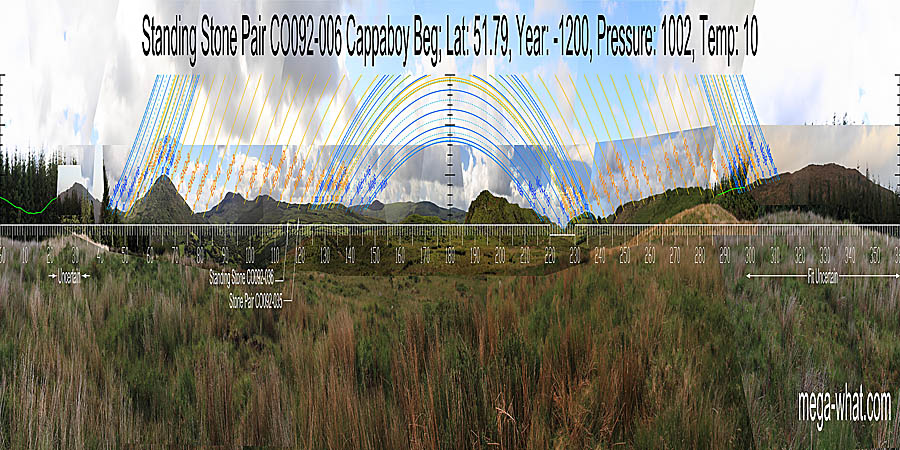 Cappaboy Beg Standing Stone Pair is about 7km north-east of Kealkill. On high ground, north of the R584.
The eastern stone is a broken stub.
Cappaboy Beg Standing Stone Pair is about 7km north-east of Kealkill. On high ground, north of the R584.
The eastern stone is a broken stub.
South is marked by a far intersect dip to the left of a near one [Pic].
North is on a slope [Pic].
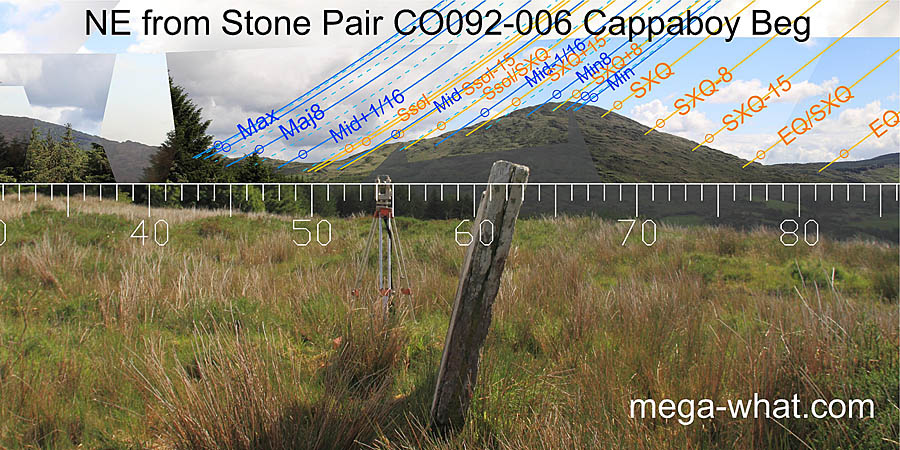
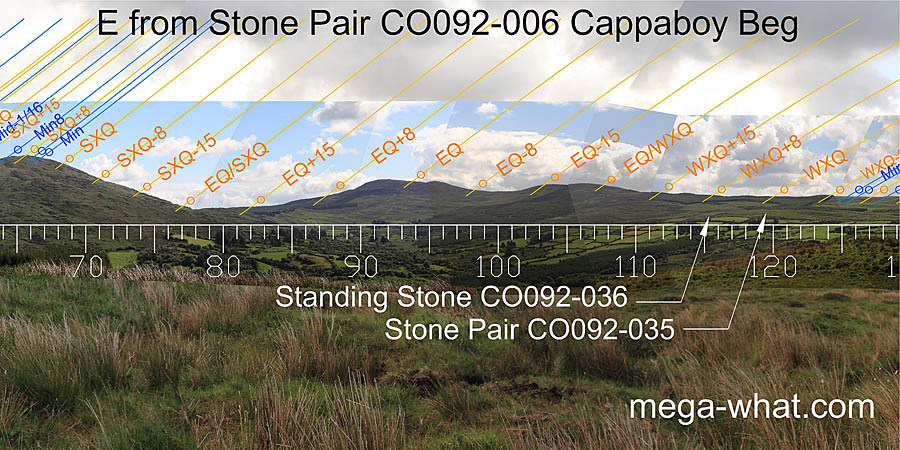 North-eastern lunisticesLunistices are the most northerly and southerly moons of the month. The lunar equivalent of solstices - more. span a solstitial dip with the minor standstill marked by the hilltop.
North-eastern lunisticesLunistices are the most northerly and southerly moons of the month. The lunar equivalent of solstices - more. span a solstitial dip with the minor standstill marked by the hilltop.
Equinox sunrise is in a dip on a hilltop with the equinox / summer cross-quarter midpoint in the dip to its left.
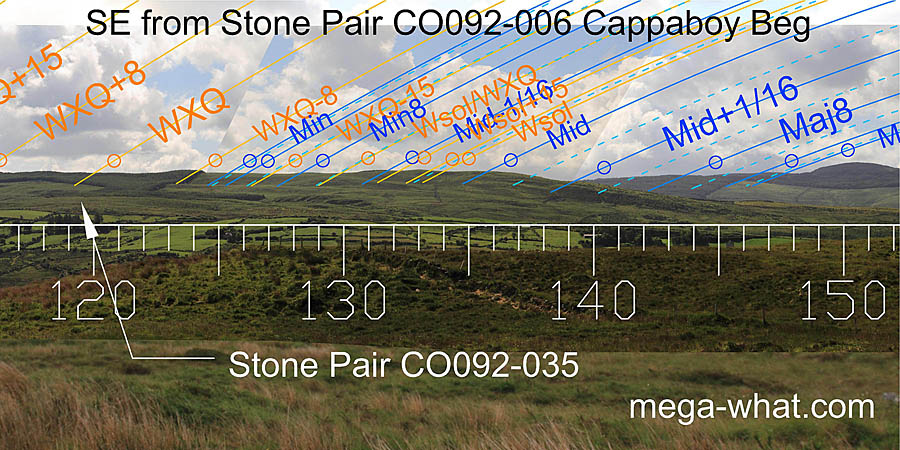
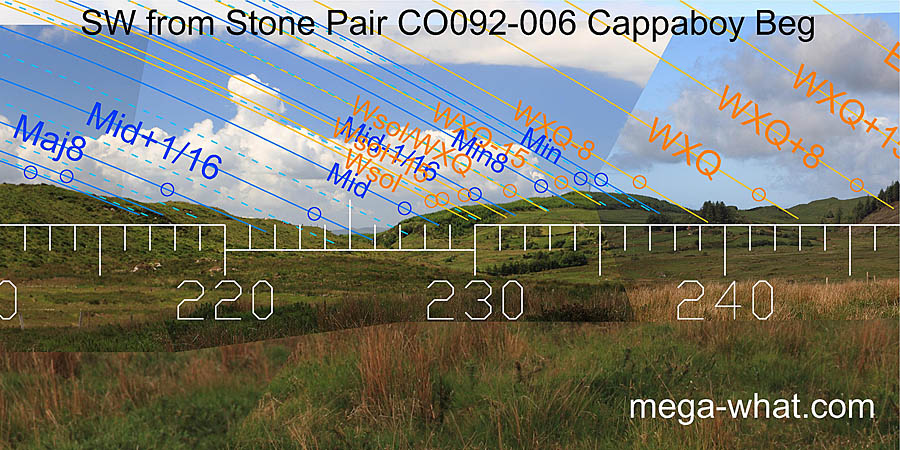 South-eastern lunisticesLunistices are the most northerly and southerly moons of the month. The lunar equivalent of solstices - more. span a dip with winter solstice in the last dip of the hilltop and major standstill marked by the slope of the next hill.
South-eastern lunisticesLunistices are the most northerly and southerly moons of the month. The lunar equivalent of solstices - more. span a dip with winter solstice in the last dip of the hilltop and major standstill marked by the slope of the next hill.
South-western lunisticesLunistices are the most northerly and southerly moons of the month. The lunar equivalent of solstices - more. span a dip with the minor standstill marked by a hilltop.
Both these dips mark lunar sixteenths.
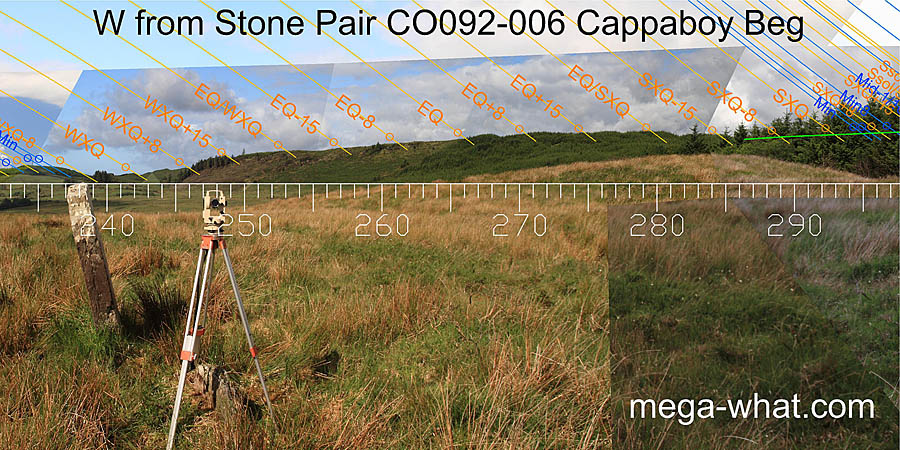
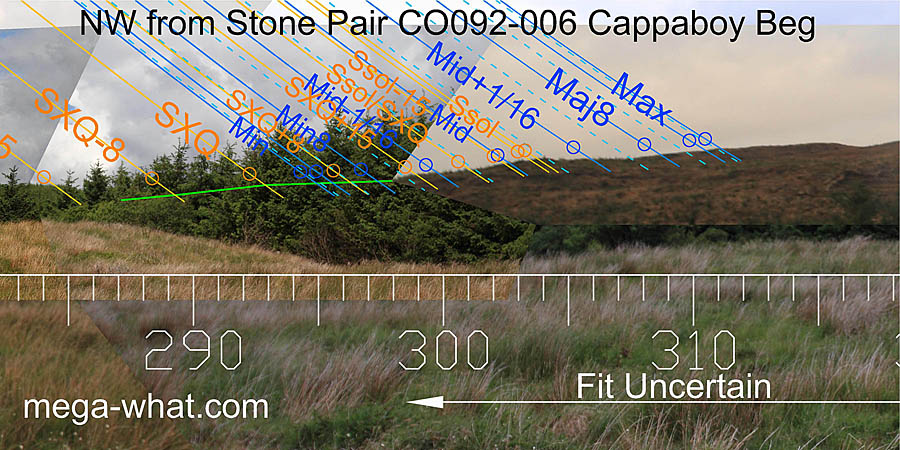 Westwards, winter cross-quarters are in a dip and maybe summer cross-quarters are too.
Westwards, winter cross-quarters are in a dip and maybe summer cross-quarters are too.
The north-west is currently obscured.
- Four-poster monument CO092-008004 (unsurveyed) is c.120m down slope to E (70°)
- Radial Stone Enclosure CO092-009001 (unsurveyed) is c.340m down slope to E (74°)
- Gortloughra Stone Pair is across the valley, c.2km to SE (119°)
- Cahermuckee Stone Pair is c.3.4km south-south-west (200°)
References
- Archaeological Survey of Ireland, record details. www.archaeology.ie/archaeological-survey-ireland
- POWER, D. et al. 1992 Archaeological Inventory of County Cork, Volume 1: West Cork. Dublin: Stationary Office. p39, no.175.
- Ó'NUALLÁIN, SEÁN 1988 Stone Rows in the South of Ireland. Proceedings of the Royal Irish Academy 88c:179-256, p245, no.11.
